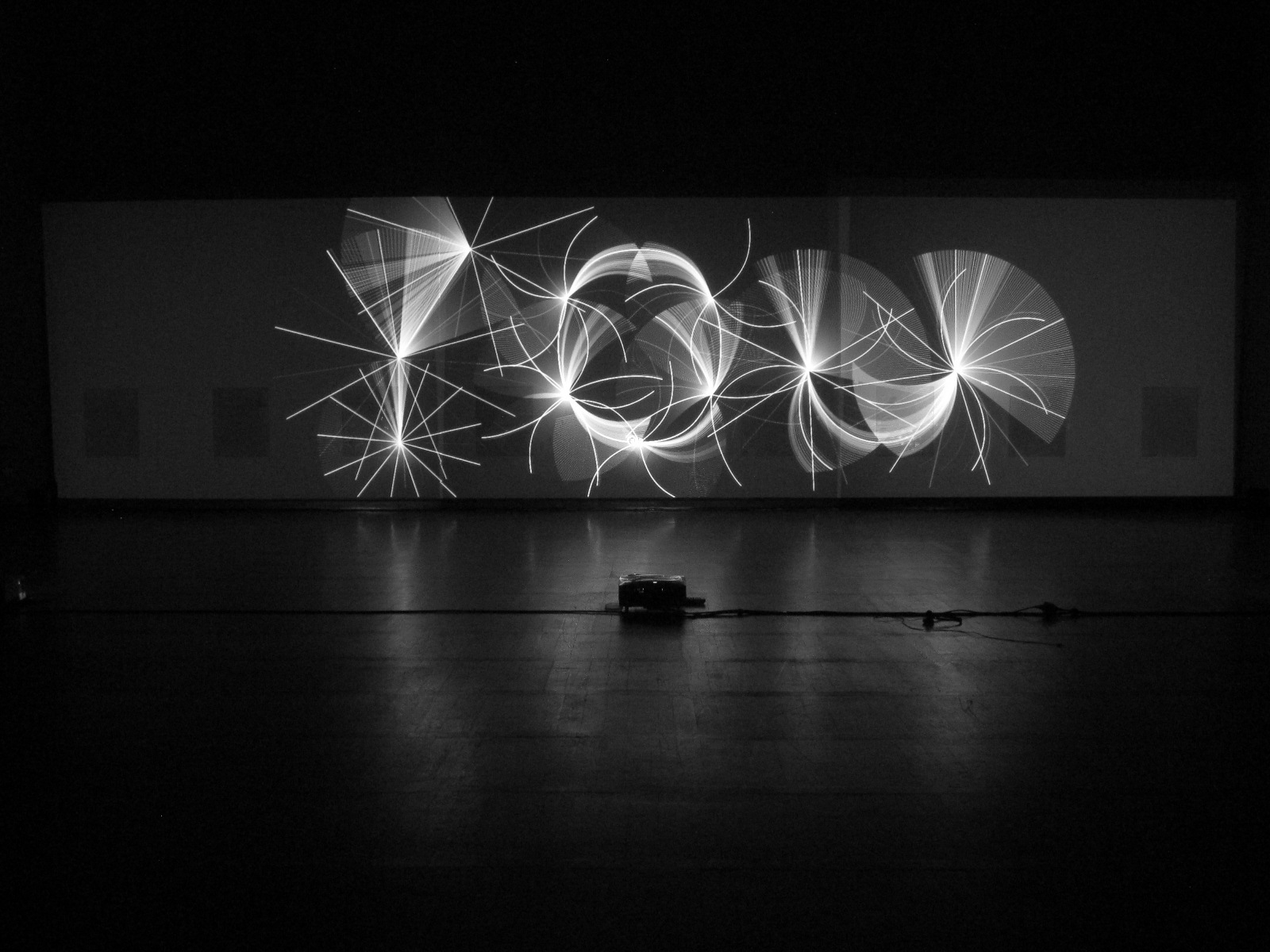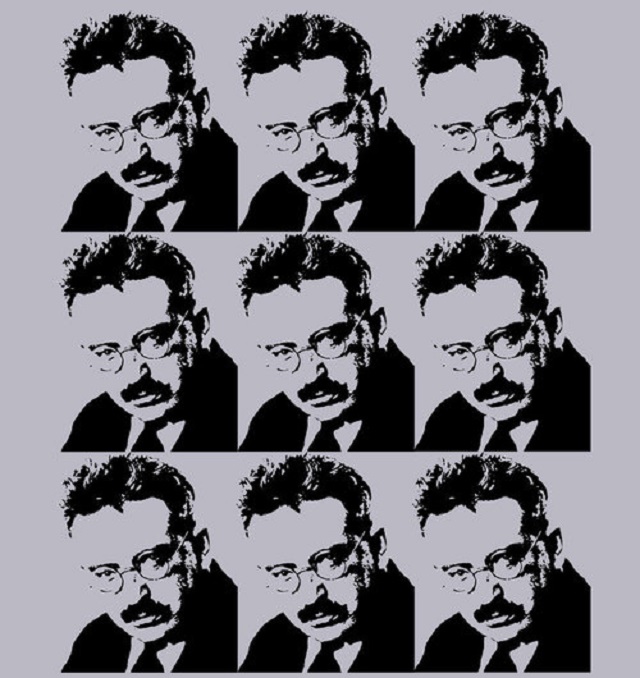New Media Art and the Aura
New Media Art. A Short Introduction
 In the last three decades, the term new media art gained massive popularity and became the official label for a wide range of artistic practices that use new media technologies (Quaranta). However, defining this type of art is “almost as difficult as defining art itself”, as Pereira notices–since the diffusion of new media into art practices is an continuos process, constantly redeveloping and redefining itself (n. pag). In an effort to come to a broader understanding of this term, theoreticians Graham and Cook define it as:
In the last three decades, the term new media art gained massive popularity and became the official label for a wide range of artistic practices that use new media technologies (Quaranta). However, defining this type of art is “almost as difficult as defining art itself”, as Pereira notices–since the diffusion of new media into art practices is an continuos process, constantly redeveloping and redefining itself (n. pag). In an effort to come to a broader understanding of this term, theoreticians Graham and Cook define it as:
“What is meant by the term new media art is, broadly, art that is made using electronic media technology and that displays any or all of the three behaviours of interactivity, connectivity and computability, in any combination.” (10)
Accordingly, new media art uses the new technologies as a medium. This implies that new media is grounded in the progressive use of technology as a medium; and technology can easily become a barrier between new media art and its audience (Quaranta). More specifically, by using technology, art becomes reproducible and loses its aura–its sense of authenticity.
In recent years, several contemporary artists began to respond to this impact of technology and tried to attenuate it through their artworks. One of the most famous contemporary artists who incorporates new media in his works is Ken Okiishi. This blog post will attempt to investigate why his art constitutes a relevant new media object and how it reopens the debate regarding the aura in contemporary art.
The Aura of a Work of Art
The notion of the aura was coined by German cultural critic, Walter Benjamin. Through a Marxist viewpoint, Benjamin explains that the transformation of art occurs as a result of the developments in the economic structure. Essentially, he states: art resembles economic production—but, at a delayed pace (Robinson). The shift from “contemplation” to “distraction” affected the way in which the viewer senses and perceives, replacing his own thoughts by moving images: ‘The public is an examiner, but an absent-minded one” (n. pag). This is where the concept of “aura” is examined. Put into a historical perspective, as Robinson explains, works of art have an aura, “an appearance of magical or supernatural force arising from their uniqueness” (n. pag). Simply put, the aura refers to the authenticity of an object or work of art and implies a sensory experience of the distance created between the work of art and the observer. In modern times, the aura–and consequently the authenticity of art, ceases to exist because of the increasing reproduction of art in various forms.
Even though the aura is lost, Benjamin argues that art gains entirely “new functions” in the contemporary society (Robinson, n. pag). Works of art can be detached from their previous uses and brought into new conjunctions by the viewer. These new functions are further explored through Ken Okiishi’s art.
Ken Okiishi
 Born in 1978 and based in New York, Ken Okiishi uses a broad range of cultural and contemporary references in his work which unfold as videos, multimedia installations and performances, revealing the complexity of the interplay between media and subjectivity (Maerkle). In more recent years, Okiishi started focusing on the implication of the flat screen digital interface technology; an object which became universal in our society.
Born in 1978 and based in New York, Ken Okiishi uses a broad range of cultural and contemporary references in his work which unfold as videos, multimedia installations and performances, revealing the complexity of the interplay between media and subjectivity (Maerkle). In more recent years, Okiishi started focusing on the implication of the flat screen digital interface technology; an object which became universal in our society.
In the series gesture/data (2013), the artist uses the surfaces of the flat screens and paints directly upon them. The screens, in turn, playback films or television footage that was “recorded, reformatted and reprocessed” (Maerkle, n. pag). By combining video recordings with paintings, Okiishi manages to create “hybrid image-objects suspended between analog and digital technologies”– therefore creating unique objects (“Ken Okiishi. Gesture/data” 2014). As Maerkle explains, the marks left by the paint point both to the finger swipes on the smartphone or tablet and also to the various traditions of painting, leading back to Chinese and Japanese calligraphy and Abstract-Expressionism. This interplay between the paint and the screen indicates that “interference itself becomes the content” (n. pag).
Regaining the Aura in Contemporary Art
By painting directly on television flat-screens and tablets, Okiishi challenges the original purpose of cinema, television and video production methods and reacts to “the migration of images, information, and language in a world increasingly reshaped by digital media” (“Ken Okiishi. Gesture/data” 2014). His art works can be considered media objects due to the fact that he uses technology as a support in order to create new and unique artworks.
Technology and new media, in his art, are a medium as any other. In order for his artworks to be valuable they need to go through a transformation process; hereby implying–painting directly on the screens. This, in turn, reopens the debate about the aura of an artwork mentioned above. By using new media simply as a medium, Okiishi gives new meaning to his art and creates unique objects, while likewise–responding to the impact of technology.
List of References
Graham, Beryl, and Cook, Sarah. Rethinking Curating: Art after New Media. Cambridge, MA: MIT, 2010. Print.
“Ken Okiishi. Gesture/data. 2014.” MoMA. The Museum of Modern Art, 2016. Web. 18 Sept. 2016.
Maerkle, Andrew. “Ken Okiishi: Pt 1.” Art iT. Sept. 2015. Web. 18 Sept. 2016.
Pereira, Lorenzo. “Why Is It So Difficult to Define New Media Art ?” WideWalls. N.p., n.d. Web. 18 Sept. 2016.
Robinson, Andrew. “Walter Benjamin: Art, Aura and Authenticity.” Ceasefire Magazine RSS. N.p., 14 June 2013. Web. 18 Sept. 2016.
Quaranta, Domenico. “What’s (Really) Specific about New Media Art? Curating in the Information Age.” Rhizome. N.p., 6 Dec. 2012. Web. 18 Sept. 2016.

